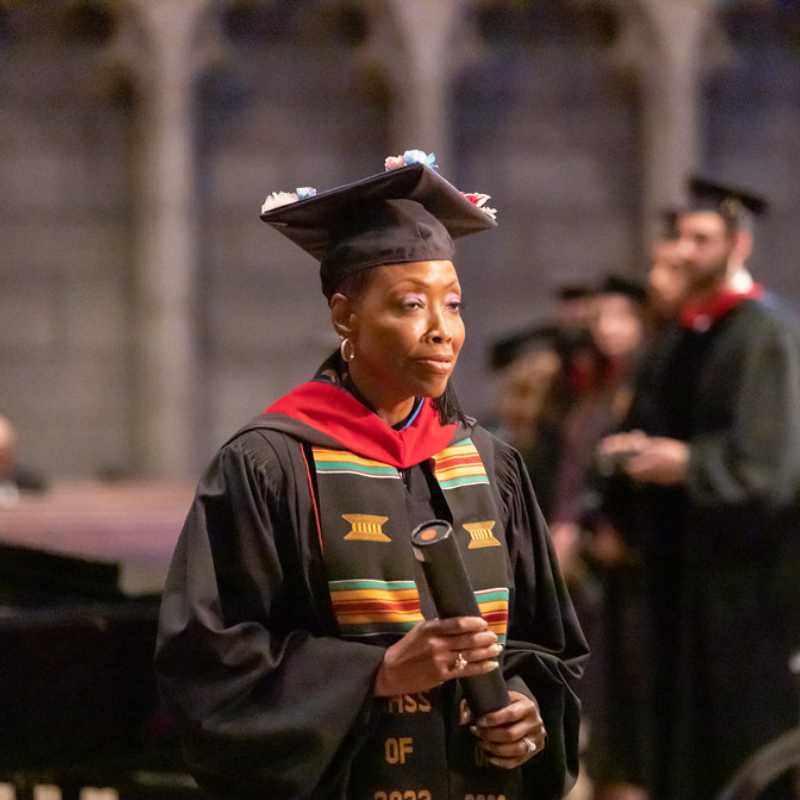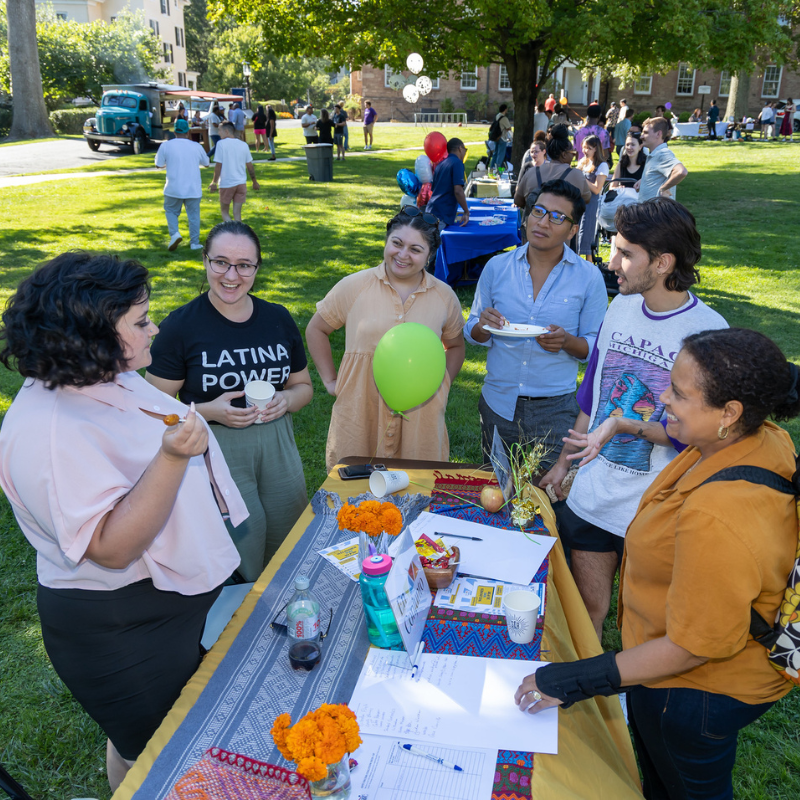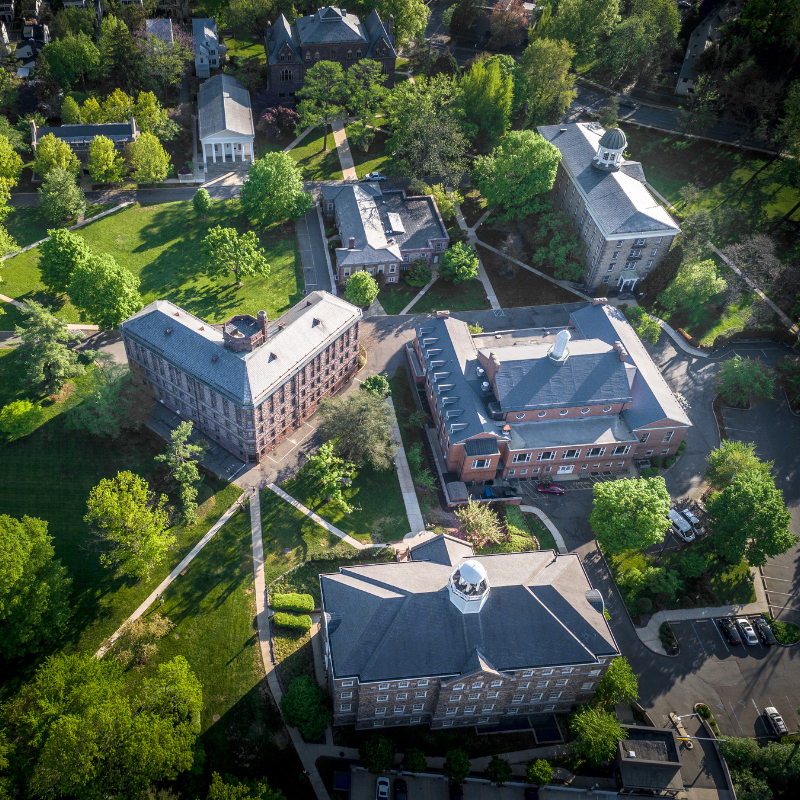Artist in Residence: Lourdes Bernard
October 10, 2023 | Featured, Music & Art, Overseas Ministries Study Center, Public
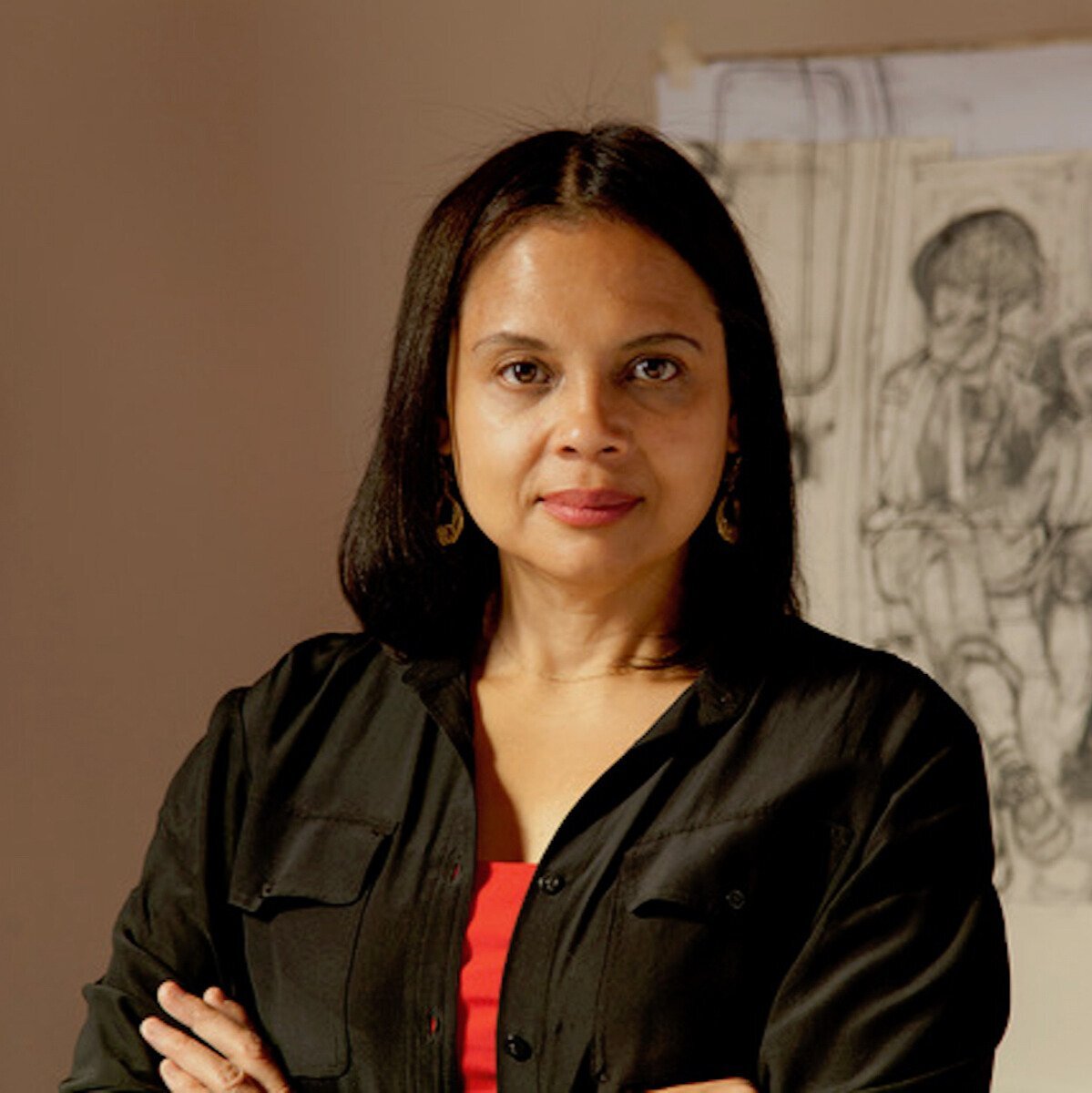
Lourdes Bernard was at her home in Brooklyn, but her mind was focused on the United States’ southern border.
Federal authorities were separating migrant children from their parents under a Trump administration policy aimed at showing “zero tolerance” for border crossings.
For Bernard, who is this year’s artist-in-residence at Princeton Theological Seminary’s Overseas Ministries Study Center (OMSC), the actions by the U.S. in 2017 and 2018 struck a nerve.
“When I started to see what was happening at the border, I knew that family separation was connected to me,” she said. “It mirrored my experience, and I became curious about my own immigrant story.”
So, she channeled her feelings into art.
In 2017 as artist-in-residence at El Museo del Barrio in New York City, Bernard produced a series of research-based paintings and drawings called “The Women of April” that depicts the untrained civilian women who emerged on the streets of the Dominican Republic to resist the U.S. invasion of the country in April 1965. The project is also personal. For it was during this conflict that Bernard’s family and thousands of other Dominicans were forced to flee their homes.
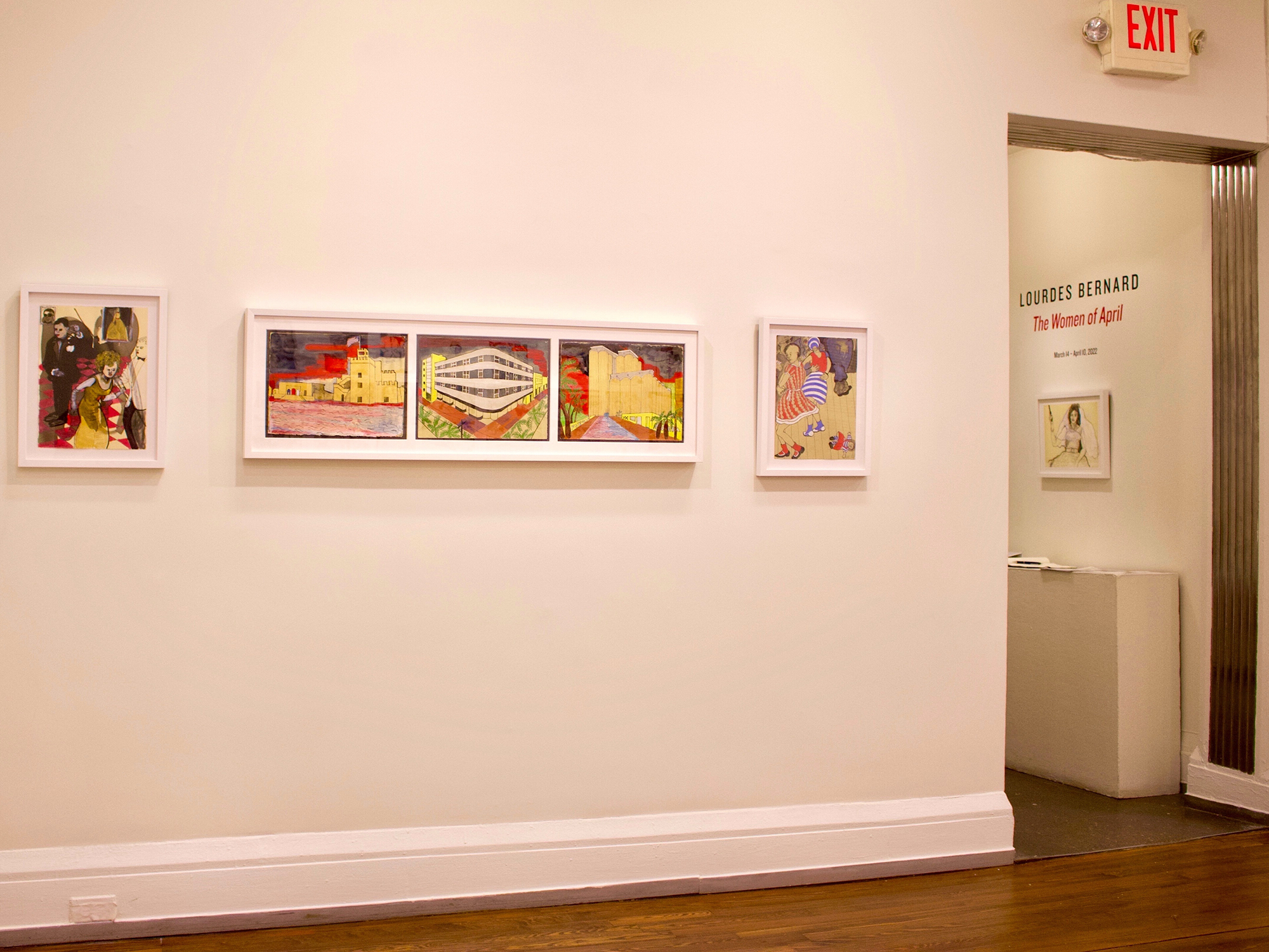
Courtesy of the New York Studio School
“This art is about remembrance, and reclaims stories I did not know I carried,” Bernard said. “Memories offer us a basis for meaning and integration. Remembrance is a path to discovery.”
The artist-in-residence program of the OMSC, a renowned research center, aims to bring an artistic dimension to its globally engaged scholarship. And Bernard is a perfect fit for that goal, said Easten Law, the center’s assistant director for academic programs.
“Her passion for justice and public witness in the context of both the Dominican Republic and the United States is an ideal expression of what we want our artist-in-residence program to be about.” Law said.
Bernard, too, is thrilled to be the Seminary’s 2023-2024 artist-in-residence.
“The residency feels particularly life-giving,” she said. “Making art in the midst of a theological seminary community feels like an invitation to integrate my spirituality and art-making in a deeper way.
“Also, because my work is research-based I’m excited at the opportunity to use the image based resources at the Wright Library, particularly the illuminated manuscripts.”
One of Bernard’s projects while in residence at the OMSC is “The Icon of Reality” a series of portraits inspired by the poetry of Jesuit Gerard Manley Hopkins.
Bernard began her career as an architect, working on major building projects, including the Rutgers Business School by Mexican architect Enrique Norten and the Italian embassy by Piero Sartogo in Washington, D.C.
But a visit to the National Museum of Women in the Arts inspired her to make a career change. Moved by the works of the Mexican painter Frida Kahlo, and by mixed media artist Carrie Mae Weems’s “Kitchen Table” series of photographs, Bernard began creating her own images.
She developed an approach that she describes as “artist-as-witness,” relying on historical research and a variety of materials to convey a complex story through a visual narrative.
“It’s one thing to say, ‘This history happened’ or ‘This invasion happened,'” Bernard said. “But to really witness what that meant and offer it up to people—that is what I am getting at.”
Bernard said her art gained new depth through study with the Rev. Richard Rohr, a Franciscan priest and widely acclaimed ecumenical teacher who runs the Center for Action and Contemplation.
“I have thought more deeply about art making as a practice for truth-telling,” she said. “Truth-telling includes making images about challenging histories, and images that re-frame how we view current issues such as our disastrous immigration policies, racism, and sexism.
“But the work is also about celebrating our humanity, our relationship with nature and with each other.”
With “The Women of April,” Bernard set out to capture a sweeping historical narrative while reclaiming her own story.
The U.S. has a long history of intervention in the Dominican Republic, backing economic and political systems that benefit the wealthy while keeping the majority in poverty. U.S. military forces occupied the country from 1916 to 1924, and trained and supported the brutal dictator, Rafael Trujillo, who ruled the country from 1930 until 1961. During the 1965 invasion, the U.S. had some 42,000 troops in the Dominican Republic.
“The Women of April,” which was exhibited at the New York Studio School in 2022, includes many striking images: A U.S. military sniper perched on a factory rooftop. Dominican women in bright print dresses toting rifles on the street. One painting, “The Magnificat In Bloom” is of a black Madonna that references what Catholics call Mary’s Song in the Gospel of Luke.
The exhibition also included “Prologue,” a series of pen-and-ink drawings that tell the larger story of U.S. involvement in the Dominican Republic during the bloody Trujillo era.
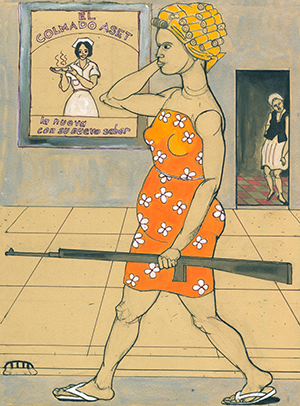
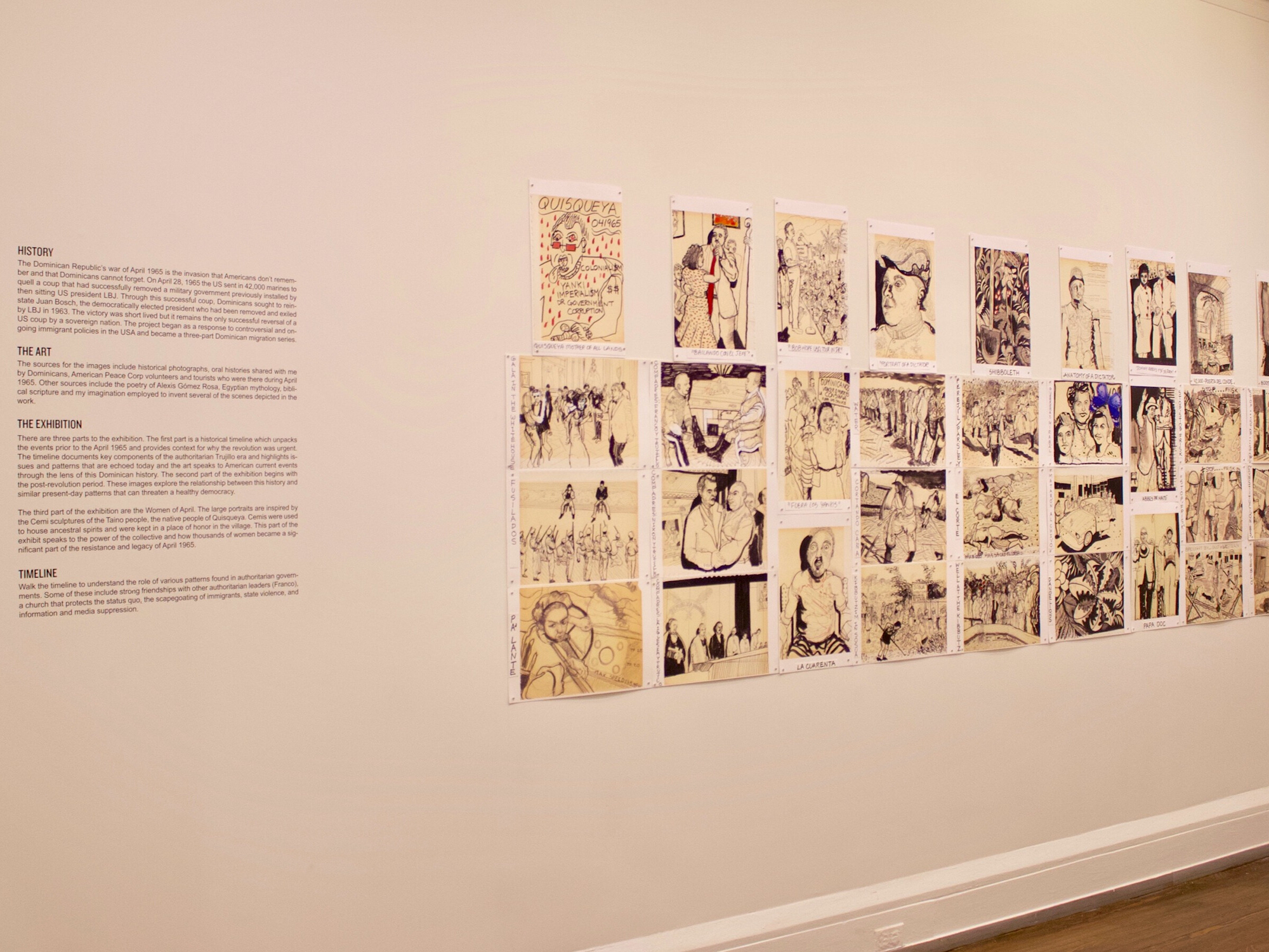
Courtesy of the New York Studio School
“This project unpacks how militarism and U.S. imperialism are push factors for mass migration and displacement,” Bernard said. “The aftershock of April 1965 is still with us as the vast Dominican diaspora, which is now the largest immigrant community in New York City and the fourth largest Latino group in the United States.”
Lourdes Bernard’s solo exhibition “The Women of April and Selected Works” will be on view at The Erdman Center at Princeton Theological Seminary from October 24-December 15, with a November 2 opening reception.


